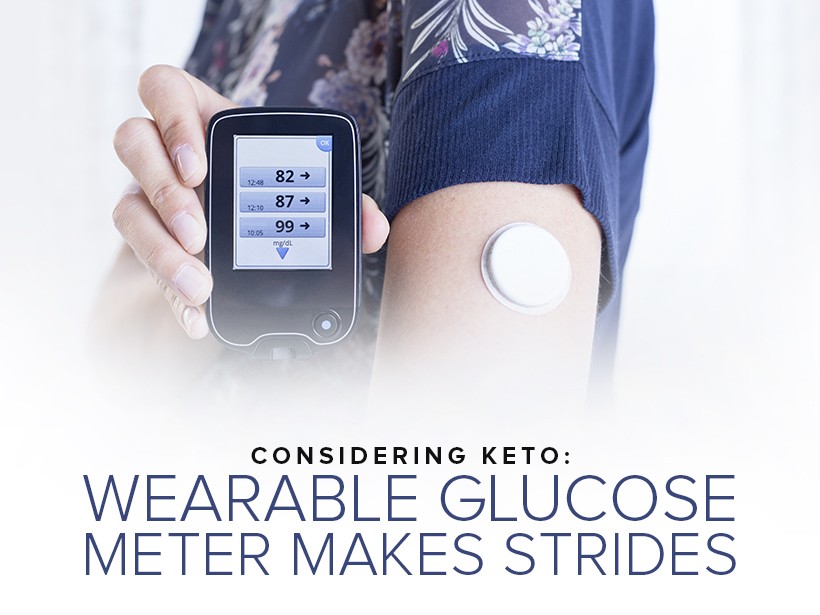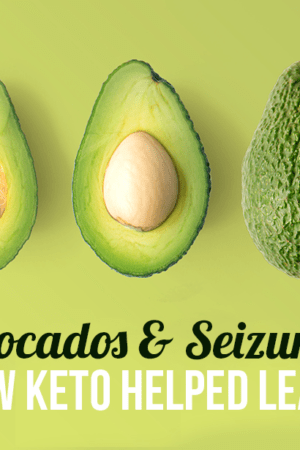With a good bit of research indicating the negative impacts that sugar and carbohydrates have on health, there’s been growing interest outside of the diabetic community to gain insight into blood glucose levels. Specifically, a new trend in health shows that many people are increasingly interested in examining the response that their bodies have to certain meals throughout the day.
For ketogenic dieters, who opt to maintain stable, low insulin levels as part of their health and weight loss goals, having continuous insight into how their meals impact their insulin response would be a considerable and unique advantage in targeting foods that may be intolerable. Up until now, devices used to monitor your blood glucose on an ongoing basis have been unavailable outside of diabetic monitoring and involve keeping a rather uncomfortable needle under your skin for the majority of the day.
Sano: Continuous Glucose Monitors
Having received a $6 million investment from fitness tech giant FitBit, the San Francisco startup Sano, is poised to develop the world’s first practical continuous blood glucose monitor. Aiming to bring insight into the way meals impact our blood sugar levels, Sano has developed a wearable patch that creates snapshots of your blood glucose levels throughout the day and presents them in a simple app for monitoring.
Needless Blood Sugar Monitoring
The keystone to the wearable nature of Sano’s blood glucose monitor is that it’s based on needleless blood testing technology. The tracker itself is a smooth, thin disc that receives a disposable sensor containing 400 microneedles, which bear a similar texture to sandpaper. The sensor could be worn for several days, but replaced to reduce the risk of infection from contamination. With a rough, sandpaper texture on the sensor, application may be slightly prickly, but nowhere near as uncomfortable as traditional methods of inserting a needle under the skin.
Tracking Sugar as a Trend
With FitBit’s investment in Sano, other tech giants like Apple and Google are making moves to incorporate blood glucose monitoring into their own device product lines. This trend comes on the heels of an increase in obesity, diabetes, and a more conscious look at how sugar affects our body processes.
From a ketogenic standpoint, the idea of wearable tech to track insulin spikes and blood glucose levels is a tremendous advancement. Aside from the insights regular dieters can gain from seeing the impact of that bowl of pasta has on their blood sugar, keto dieters could use the device to examine how certain foods, like artificial sweeteners or hidden carbohydrates, create a response. Each of us is unique, and every person’s response to certain foods is equally as distinct. Having a practical, wearable way to tailor our diets to suit our own metabolic needs is the kind of advancement the keto community has been waiting for.
NUTRITIONAL DISCLAIMER
The content on this website should not be taken as medical advice and you should ALWAYS consult with your doctor before starting any diet or exercise program. We provide nutritional data for our recipes as a courtesy to our readers. We use Total Keto Diet app software to calculate the nutrition and we remove fiber and sugar alcohols, like erythritol, from the total carbohydrate count to get to the net carb count, as they do not affect your blood glucose levels. You should independently calculate nutritional information on your own and not rely on our data. The website or content herein is not intended to cure, prevent, diagnose or treat any disease. This website shall not be liable for adverse reactions or any other outcome resulting from the use of recipes or recommendations on the Website or actions you take as a result. Any action you take is strictly at your own risk.
- Scottish Government: ‘Obesity Will Be One Of The Great Public Health Challenges Of Our Time’ - September 5, 2018
- Virta Health’s Use of Telemedicine to Treat Diabetics with Keto - September 3, 2018
- New MyProtein Nutrition Bar Disrupts Nutrition Standards - May 24, 2018




